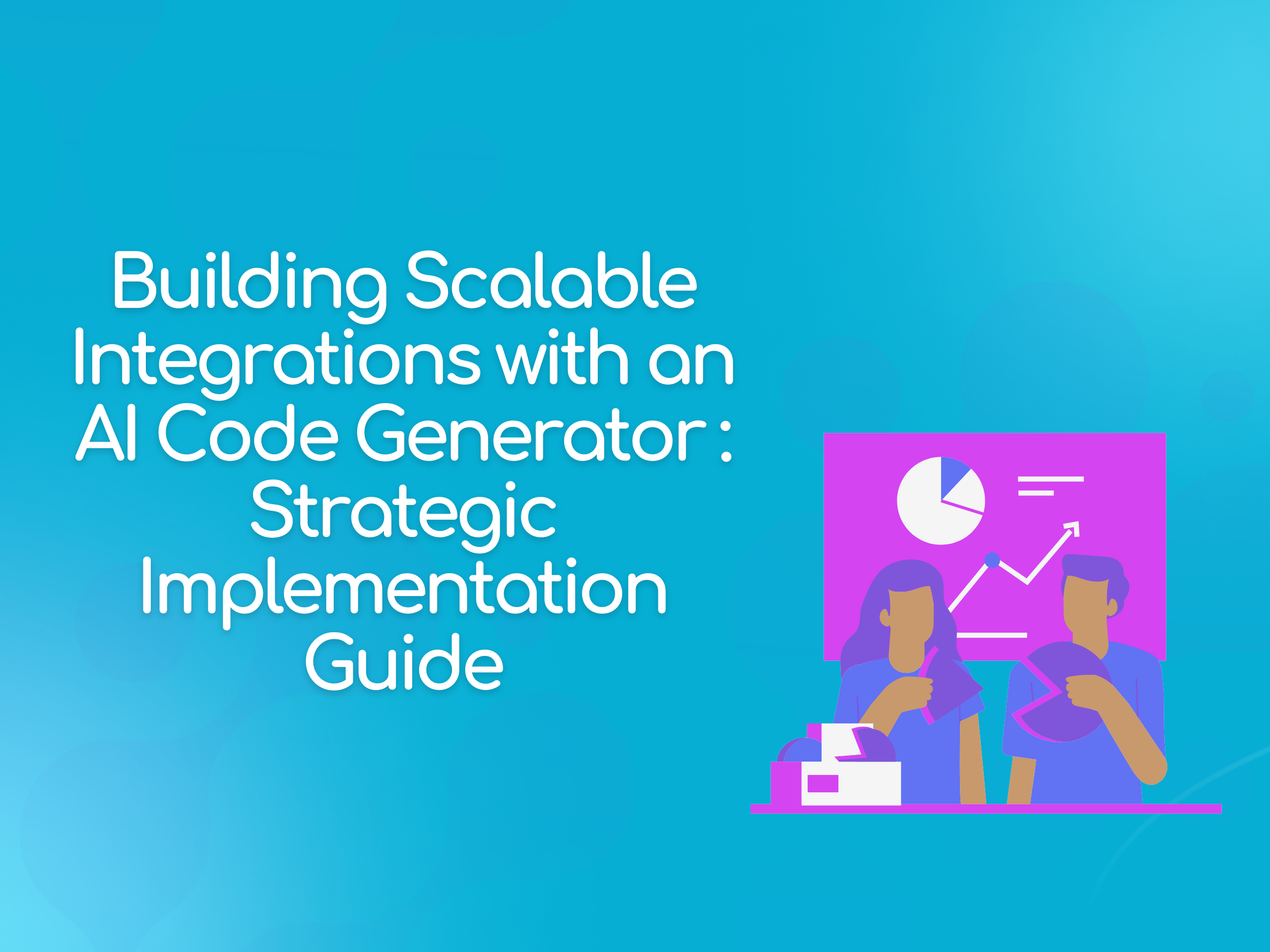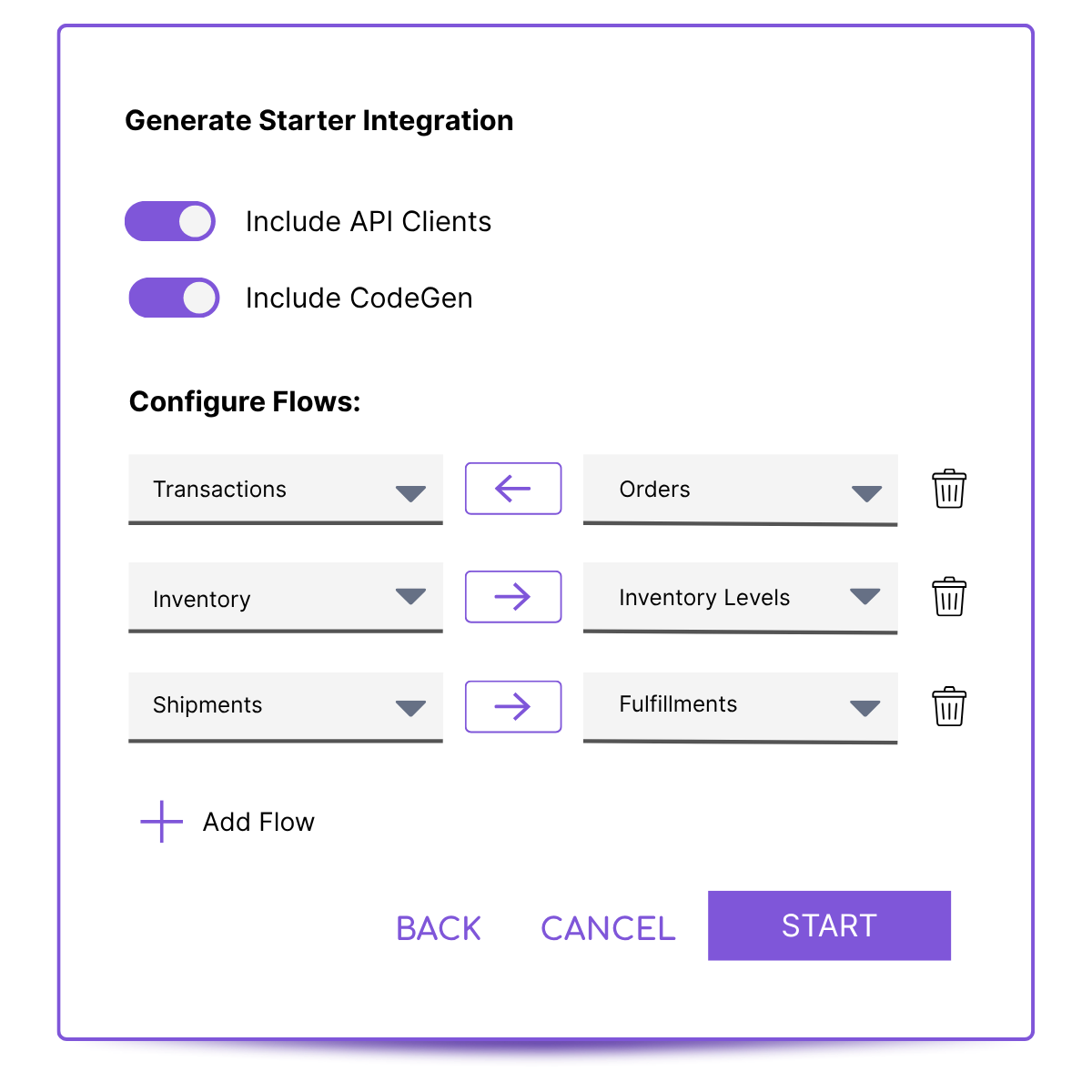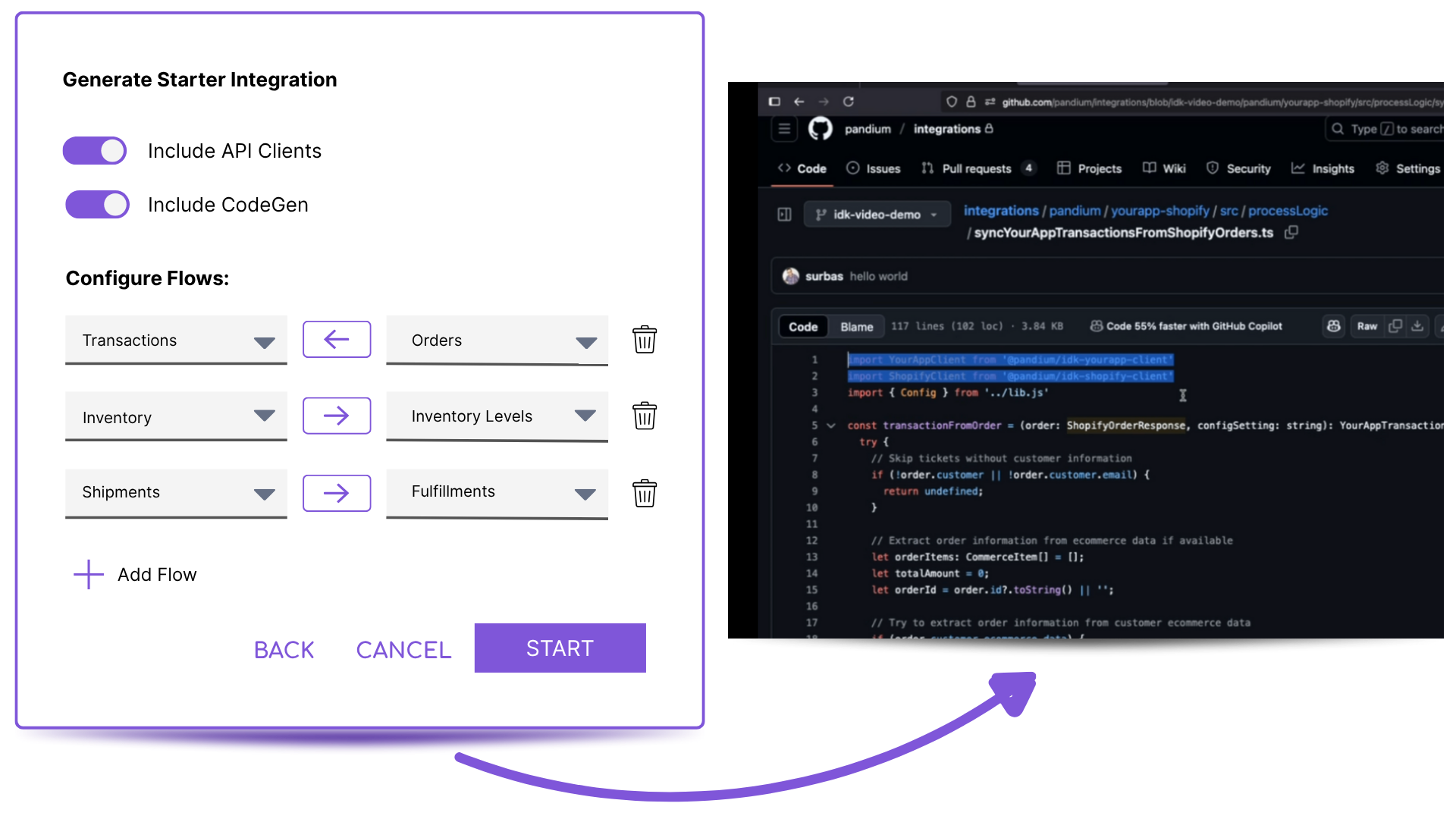Building Scalable Integrations with an AI Code Generator: Strategic Implementation Guide

Integrating AI code generation into your development process requires careful planning to balance automation with engineering rigor. At Pandium, we focus specifically on building product integrations, and this guide details the best practices we’ve learned while building integration code with AI code generators. This blog also encapsulates the way we’ve built the new AI-powered code generation feature in Pandium, so you can understand exactly how building integrations with Pandium’s AI-powered integration code generator is better than building with a generic code generator.
Defining AI Boundaries and Guardrails
To do its best work, AI needs clearly defined boundaries. You can think of AI like an excited intern, or junior employee that really wants to be helpful, but without specific boundaries and guidelines about what work they should be doing, their output can quickly become….. unhelpful. Here we outline some of the specific ways that you can set boundaries for AI code generation.
Scope Containment Strategy
AI should be limited to specific, repeatable tasks like data transformation logic or API call sequencing. At Pandium, we restrict AI to flow logic generation only – fetching data from one API, transforming it, and sending to another. This prevents architectural overreach while maintaining:
- Predictable outputs through predefined code templates.
- Encapsulated complexity using pre-built API clients for pagination/rate limiting.
- Controlled environments where AI only interacts with sanctioned methods.
Practical Implementation Example
When syncing NetSuite orders to ShipBob:
- AI receives structured prompts defining the exact flow requirements.
- Accesses only Pandium's vetted API clients with built-in error handling.
- Generates ONLY the transformation logic – not authentication or scaffolding.
Validation Infrastructure
By implementing a multi-layered verification of what’s being created by the AI code generator, you can reduce the errors being produced.
- Automated validation: Implement immediate compilation checks and test pipelines for AI-generated code before human review.
- Structured prompting: Use focused prompts with explicit method definitions and parameter shapes instead of overwhelming the AI with full documentation.
- Error feedback loops: When code fails validation, pass error output to secondary models for refinement suggestions rather than simple retries.
Prompt Design Principles
Using specific prompt design principles can help ensure that you are constraining the work done by the AI code generator, and focusing it on specific tasks without overwhelming it with unnecessary information.
- Focused context: Provide only necessary method signatures and data shapes
- Avoid documentation dumps: Providing an overwhelming amount of context reduces accuracy
- Iterative refinement: Pass error outputs back to AI for targeted improvements
With Pandium’s AI integration code generator - we take the inputs from the AI CodeGen Screen within Pandium and feed that into a carefully defined prompt to ensure that the code produced is consistent enough for a reliable integration to be built. The user only needs to select the objects and direction of data flow. The prompt is then generated behind the scenes using the principles above.

Maintaining Engineering Integrity
Modular Architecture Design
Separating AI-generated components (like data flows) from core architecture and configuration logic delivers significant technical and operational advantages for integration development. It ensures you have reusable foundations, reduced hallucination risk, better maintainability and quality enforcement.
Left to its own devices, AI can often make unusual architectural choices that then lead to additional rework at a later stage. By maintaining best practices in architectural design, and focusing AI only on the data flow logic, the integration code generated is better quality, and the overall integration is more resilient.
Human Review Protocols
Keeping humans in the loop ensures that you are only putting checked and verified code into production. Even if all code goes through the automated testing and validation steps mentioned above, humans still serve an essential role in validating the code. AI generated code should go through:
- Code review by senior engineers
- Integration into CI/CD pipelines
- Validation against production-like environments
- Performance benchmarking
With Pandium’s AI code generator, the integration code gets automatically created in your git repository, allowing you to follow standard review, CI/CD and engineering processes. You can treat the AI generated code like you would code created by a junior engineer - code that would need peer review and iteration before being pushed to production.
Pandium’s AI code generator also creates readable code. By incorporating engineering best practices and all of our integration knowledge into the AI code generation process, we are able to create AI generated code that is easy for engineers to read and review.

Incorporation into Existing Engineering Flows
Pulling AI-generated integration code into an IDE or CLI is critical for maintaining engineering control, enabling thorough review, and facilitating iterative refinement. This approach ensures developers retain full ownership of the codebase, can audit AI output for quality and security, and make necessary customizations without vendor lock-in.
With Pandium, this process is streamlined through its developer-centric workflow: AI-generated flows are stored directly in your GitHub repository as standard code files, allowing seamless cloning into any local IDE. The Pandium CLI then enables local execution, testing, and debugging of these flows before deployment. This workflow guarantees that AI-generated components undergo the same rigorous version control, peer review, and CI/CD pipelines as human-written code, preserving engineering standards while accelerating development.
Code Ownership Practices
One of our core principles at Pandium is that you should own your code. This means you can update your code as needed, without waiting for a vendor. And you have full portability of any integration code that is created. This applies to code created through the AI code generator, or non-AI generated code. Owning your code allows you to:
- Maintain full editing capabilities
- Prohibit black-box implementations
Summary
AI code generation excels when treated as a specialized tool within a well-architected system. By combining constrained AI capabilities with strong engineering practices and human oversight, development teams can achieve significant acceleration in integration development while maintaining production-grade reliability. The most successful implementations view AI as a force multiplier for engineering teams – not a replacement for critical thinking and technical expertise.
From the Blog
.jpg)
How to Build Thriving Remote Product Teams
.jpg)
